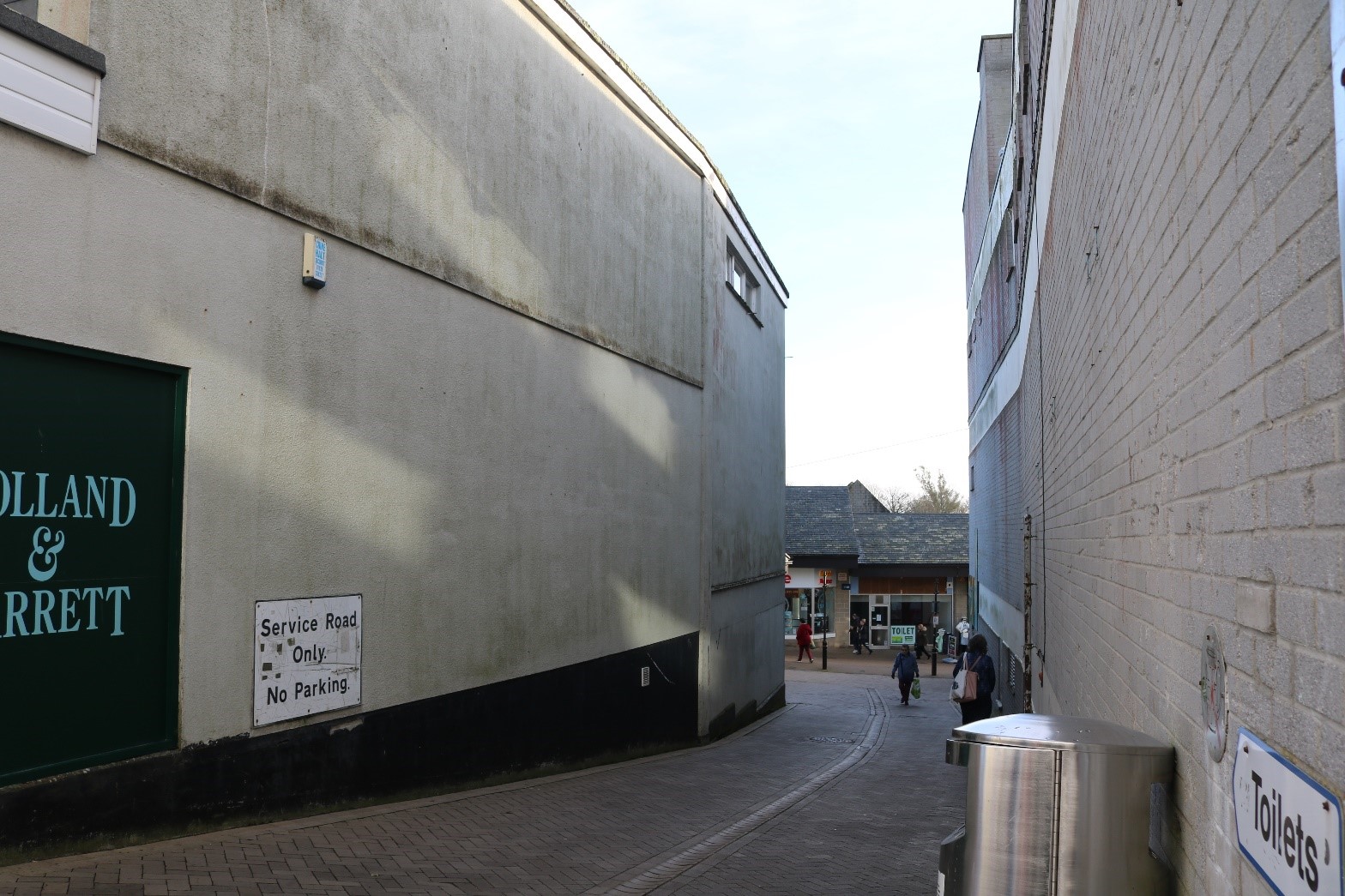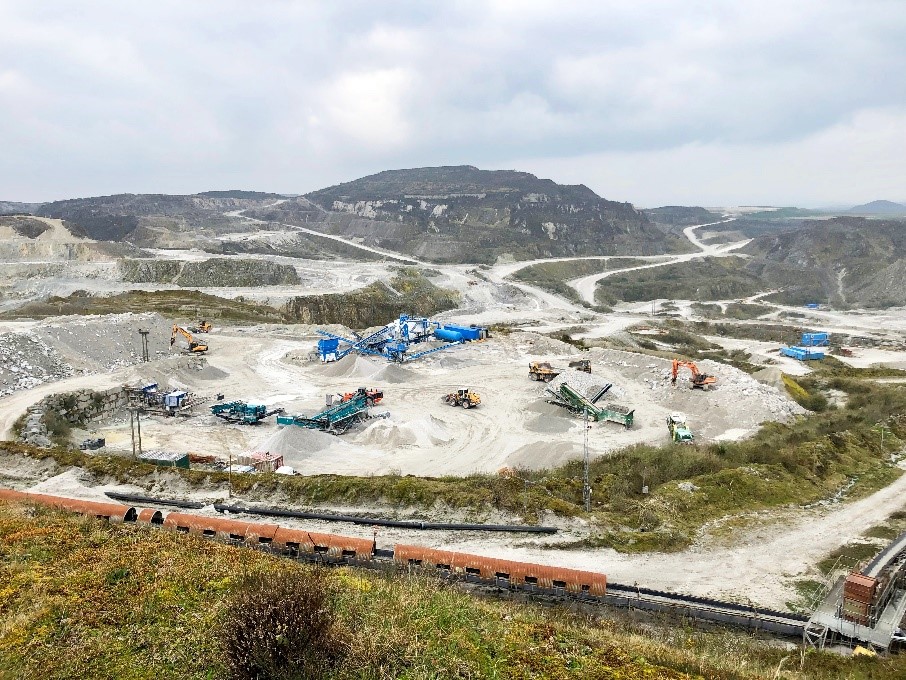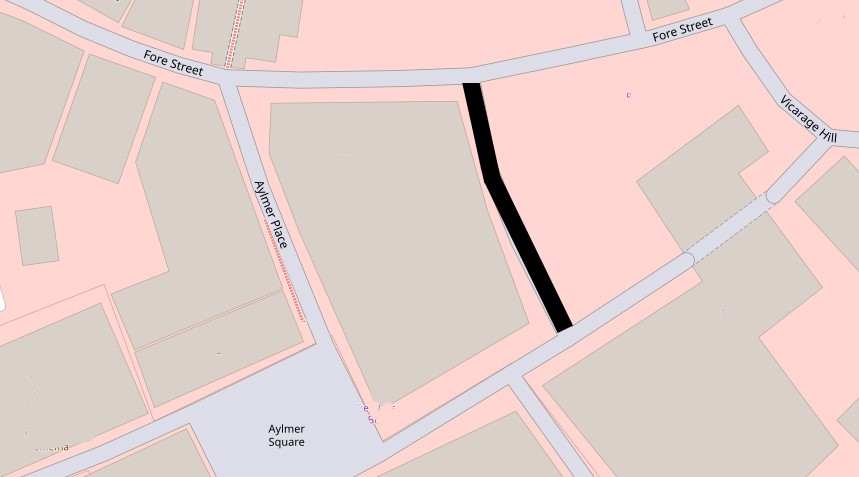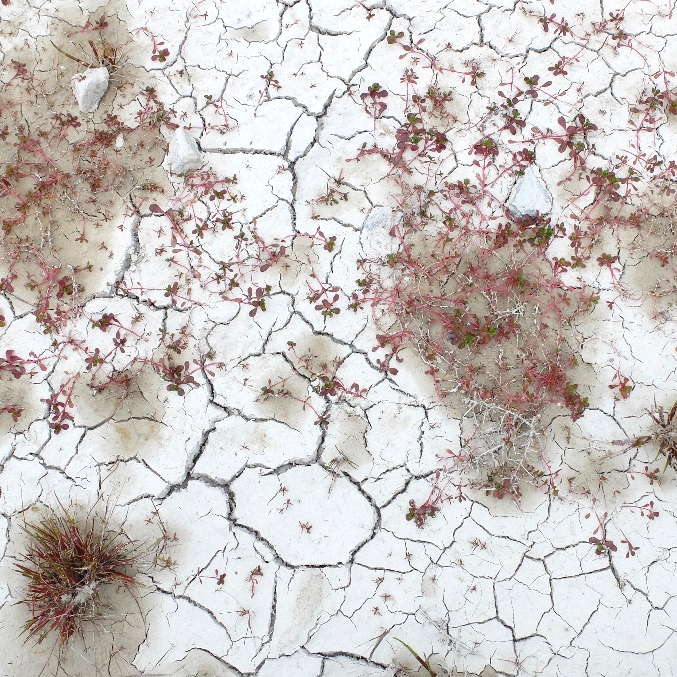Whitegold Public Space Commission - OPE
Deadline: 21/11/2019City: St Austell | Region: Cornwall and Isles of Scilly | Country: United Kingdom | Whitegold
Paid opportunity
OPE - A public space commission from The Whitegold Project with a total budget of £30,000. Ope is a Cornish word for “alley“. This project is one of a number of public space commissions for St Austell by the Whitegold Project. Artists, makers and designers are invited to apply for a commission for Chandos Place, one of St Austell Town Centre’s main pedestrian thoroughfares. Whitegold is keen to see an artwork that connects to one or more of the key concerns of the project – China Clay, the culture of clay country, the area's gardens, the natural world and the future environment, somehow adding to a sense of place. We would like to see an innovative, contemporary and forward-looking project which indicates a creative future for the town and surrounding areas.
Project Name: OPE (alley)
Location: Chandos Place, St Austell, PL25 5LJ, UK
Project Partners: Commissioned by not-for-profit company St Austell Bay CIC with St Austell Bay Economic Forum, Cornwall Council, White River Place, Willake Ltd, St Austell Business Improvement District. Funded by the Coastal Communities Fund.
Project Description:
Ope is a Cornish word for “alley“. This project is one of a number of public space commissions for St Austell by the Whitegold Project.
Artists, makers and designers are invited to apply for a commission for Chandos Place, one of St Austell Town Centre’s main pedestrian thoroughfares, connecting Fore St with Old Vicarage Place. It is a challenging space but one with scale and presence, and an important connection from the main street to the central square in St Austell.
The current buildings that flank Chandos Place were built in the 1960’s as part of a new shopping precinct for the town, designed by Alastair MacDonald and Partners. Prior to this Chandos Place was the location for an Odeon art deco cinema built in the 1930’s. Near here were the grounds of the old Vicarage for Holy Trinity Church whose gardens are remembered in the name of Old Vicarage Place, adjacent.
We currently have permission to use all of the eastern elevation of the ope and a lower section of the western elevation at the bottom of the slope. It should be noted that the passage is used for vehicular access from Fore St.
Thematically we are keen to see an artwork here that connects to one or more of the key concerns of the Whitegold project – China Clay, the culture of clay country, the areas gardens, the natural world and the future environment, somehow adding to a sense of place. We would like to see an innovative, contemporary and forward-looking project which indicates a creative future for the town and surrounding areas.
What is the Whitegold Project ?
The Whitegold Project is a new initiative set in the heart of Cornwall, in an area famous for China Clay production and renowned for the surrounding sub-tropical gardens. We see a future St Austell, its Bay and the China Clay country as places where amazing art, craft and design of all sizes and shapes, temporary and permanent, of clay and about clay, intrigues, challenges and delights both resident and visitor alike.
Developed over the past few years by the St Austell Bay Economic Forum it is the vision of some dedicated local people bringing together businesses, councils, artists, gardeners and the people living and working in the area. We believe art in public spaces and greening projects which are socially aware can play a vital role in helping to generate pride in the area, increase a sense of ownership and contribute to a better quality of life.
Whitegold is part of an overall vision for St Austell called Fresh Green Futures which aims to make St Austell into a clay and garden town, drawing on the assets of the clay attractions like Wheal Martyn Clay Works museum and established local “paradise” gardens - Eden Project, The Lost Gardens of Heligan, Trewithen, Pine Lodge, Caerhays Castle and many others. We are therefore bringing together artists, makers and designers with communities, gardeners, ecologists and others to both inspire and actually create sustainable places. Recently a grant from the Coastal Communities Fund has allowed us to make a start on this long-term process. The project also benefits from the support of St Austell Brewery, Eden Project and St Austell Print Company.
As well as public space commissions other Whitegold projects include the burgeoning Whitegold Festival, an International Ceramic Prize and Clay Exchange, supporting new collaborations and cultural networks. See www.whitegold.org.uk for more information.
Social Engagement:
In all projects we would like to see thought given to creative engagement with communities and publics in and around St Austell in an appropriate form depending on the proposal, and the skills and abilities of the artist. This could be an event, or events, engagement with individuals or communication though other means. For example, it could be at the start of the process as something that may inform ideas for the work, or it could be a way of bringing people into the process of designing/making, or just sharing ideas or skills with people. It might be a form of communication through media- however we wish to avoid tokenistic consultation. This could be something that Whitegold facilitates as part of its wider programme of work with local schools/colleges and with our project partners.
Budget:
There is a total budget for the art commission of £30,000 (including VAT if applicable). This will include artists fees, materials, installation costs and expenses and all other costs unless otherwise agreed in writing. The appointed artist will be expected to submit a budget breakdown as part of their final proposal.
Programme time line:
Appointment is by open competition.
- Closing date for submissions: 21st November 2019
- Artist interviews and appointment: 4th December 2019
- Site visit and research: December 2019
- Initial proposal including engagement: 10th January 2020
- Detailed proposal including budget: by 24th April 2020
- Fabrication and installation of artwork: no later than: August 30th 2020
Management/Technical:
The project will be commissioned by St Austell Bay Community Interest Company on behalf of the St Austell Bay Economic Forum, and managed on a day to day basis by Alex Murdin, Whitegold Curator in association with the project partners.
There will be some common sense restrictions on what is possible at this location as a public area with both pedestrian and vehicular access. Health and safety of users of the site will therefore need to be considered. Designs will therefore have to be passed by the appropriate authorities.
Ownership / Maintenance:
Chandos Place is owned by several private companies including the owners of White River Place and Willlake Ltd. The highway is maintained by Cornwall Council. The artwork will be owned and maintained by the respective property owners.
For the physical manifestations of the art project we would ideally like to see a lifespan for artwork of 25 years but this is open to proposals. In the interests of sustainability, we would like to see a project which requires minimal maintenance over that period. An idea of maintenance requirements will be needed before detailed proposals are approved. A maintenance schedule will be required before the final project sign off.
Other requirements:
The artist will be required to have Public Liability Insurance cover of £5 million and take out any other insurances that be necessary for them to work legally and safely in a public context. If working with children or vulnerable adults a Disclosure and Barring Service Check may be required. Installation will be in a public site and a method statement and risk assessment will be required in order to ensure the safety of the artist, anyone working with the artist and the public (help can be given on this).
To apply:
You will need to supply up to 10 images of previous projects, a current Curriculum Vitae and a statement about why you think your work would be suitable for this commission, with any initial thoughts you have on your approach to the project. Click on the Make a Submission tab above to apply.
A small number of artists will be invited to interview in St Austell or by video conferencing on date for Artists Interviews set out above. You must be available on this date.
Context: St Austell Bay and China Clay:
St Austell, named after Cornish Saint Austol, dates back to at least the mid-12th century. In the medieval period it developed into small market town, servicing the agricultural hinterland of south east Cornwall, the ancient mining trade in the area for copper and tin, and the fishing industry. It was a poor place but wealthy enough to make its iconic 12th century Holy Trinity Church with its richly carved Pentewan stone tower, one of the finest in Cornwall.
Growing slowly it remained a small local centre up until 1746 when William Cookworthy found, and then started mining, china clay (aka moorstone, growan or kaolin) at Tregonning above St Austell, afterwards setting up a small porcelain factory in Plymouth. By the 1780’s the famous pottery of Josiah Wedgewood had started to make porcelain (creamware) products from Cornish china clay and the industry took off, supplying the potteries of Stoke on Trent and elsewhere. St Austell’s population went from around 4,000 in 1800 to around 10,000 by 1851. The St Austell china clay deposits emerged as the largest in the world, and many other uses had been found for the clay, such as in paper, paint and rubber goods. By the mid-19th century 65,000 tonnes of china clay were being mined in the St Austell area every year by seven thousand workers. By 1910, Cornwall was producing 50% cent of the world’s china clay, something in the region of a million tonnes every year, 75% percent of which was exported. However, by the 1980s, the clay mining industry had a huge legacy of post-industrial land to address and the industry itself was facing major challenges of global competition, ageing infrastructure and rising costs.
The area possesses a great variety landscapes, from farm land to moors, cliffs and beaches. There are a number of areas with outstanding natural and built features including the World Heritage Site of the Luxulyan Valley and Charlestown, an Area of Outstanding Natural Beauty, 10 Sites of Importance for Nature Conservation, a National Nature Reserve and regionally important geological locations. The landscape produces high quality products for agriculture and natural sites are a key part of the tourism offer.
Not long after Cookworthy set up his mine the great Victorian plant hunters set off round the globe to bring back new species. The sub-tropical climate of Cornwall offered a great place to plant some those from hotter climes and in the 21st century is now well known for horticulture with significant gardens, parks and the landmark biodomes of the Eden Project.
These are positive assets but there is still much to do and the area has many of the social, economic and environmental problems associated with post-industrial places, poor quality housing and limited access to affordable housing, poor access to community infrastructure and services, low income levels, low education, skills and training attainment levels, poor health and general well-being issues. Fresh Green Futures and the Whitegold Project are forward looking responses to this situation.
Useful links and further information:
The Whitegold Project www.whitegold.org.uk
Fresh Green Futures www.staustell.co.uk/about/our-vision/
Conservation Area Appraisal https://map.cornwall.gov.uk/reports_conservation_areas/St%20Austell%20CAA%20and%20MP.pdf
St Austell Townscape Heritage Initiative www.cornwall.gov.uk/environment-and-planning/strategic-historic-environment-service/heritage-led-regeneration/st-austell-townscape-heritage-scheme/
Cornwall and Scillies Urban Survey https://www.cornwall.gov.uk/media/28534416/st-austell_report_main.pdf
Cornwall College https://www.cornwall.ac.uk/location-pages/st-austell-campus.html
Wheal Martyn Clay Works https://www.wheal-martyn.com/
Eden Project https://www.edenproject.com/
Contact the curator
You must have an account to send a message to the curator of this opportunity. Registering only takes a few moments. Once registered you'll be able to keep track of all of your submissions and get updates on upcoming opportunities.
Already have an account? You must log in to send this curator a message.
Get the latest CuratorSpace news, updates about new opportunities, upcoming deadlines, and art-related promotions.
Open Call for Artists! Be part of the 34th Community Art Exhibition in Virtual Reality—an... OPEN CALL for zine submissions on the theme of acquiring multiple copies of Paul Young’s ‘No Parlez’
We are now accepting submissions for Issue 26 of the physical zine ZERO PLAN, the theme of which... Gwen May Trust Recent Graduate Award
The Royal Society of Painter-Printmakers (RE) is offering a student membership of two years plus...





